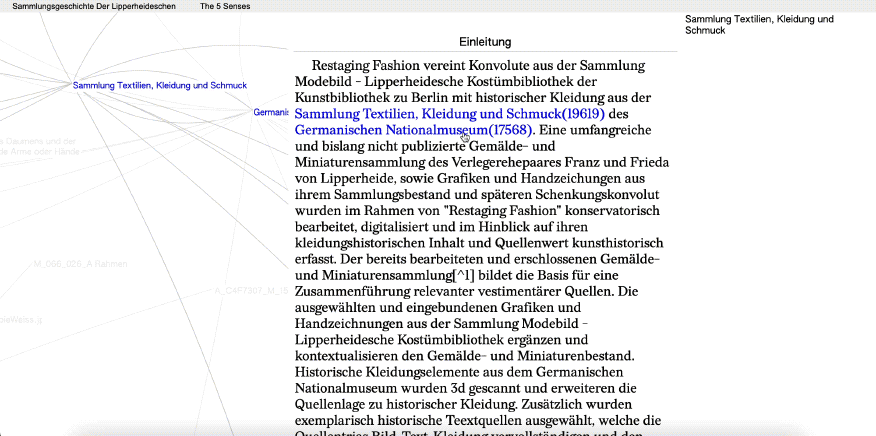Restaging Fashion
2022 - 2023
The interdisciplinary research and digitization project Restaging Fashion elaborated new perspectives on historical dress. This research united approaches and desiderata from three disciplines and respective research areas: art history (dress research), information science (knowledge organization) and information visualization. Dedicated to the cultural history of clothing, its visual appearance, and its symbolic character, the project juxtaposed the triad of image-text-dress as an approach to dress research that integrates multiple methods. The project brought together items from the collection Lipperheidesche Kostümbibliothek - Sammlung Modebild of the Berlin Art Library and historic garments from the Textiles, Clothing and Jewellery Collection of the Germanisches Nationalmuseum Nuremberg.
Excerpt of data model
The data structure used in the project was based on a simplified version of the CIDOC-CRM model, adapted to the needs of documentation and final visualization. Elements from external schemas and models (Dublin Core, Linked.Art, local schema) were also used, in order to address project specificities, whereas additional ontologies (SKOS, MADS) and vocabularies (AAT, ICONCLASS, TGN) came into play for describing concepts and named entities. The initial research data, related to the documentation of paintings and miniatures of the Lipperheide Collection, was enriched and integrated with a set of prints, drawings and garments, all brought together in an instance of Omeka S. The final model was a refined set of relationships between collection items, their digital representations and any documentation sources, creating a web of linked open data within and outside the framework of the Lipperheide Costume Library and the Germanisches Nationalmuseum Nuremberg.
Early prototype of the ReFa Reader (made by Giacomo Nanni)
More information on the project can be found on its dedicated site. The end result provides an interactive visualization that juxtaposes narrative elements with data navigation.
Together conceptualized and developed with:
Sabine de Günther, Giacomo Nanni, Linda Freyberg, and Marian Dörk.

